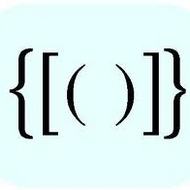--Originally published at Nihilistic Kirby
By this point you should already know how things work on python, and be familiar with certain input. So when we talk about “lists” the concept of parentheses takes place as main need for this topic.
But what exactly are lists? Well, in order to know this, there are some type of arrangement between parentheses, brackets, or braces (although braces are more often used in dictionaries (I’ll explain that later)) so you can store certain type of data (strings, integers, etc.) inside of a DATA STRUCTURE.
So, basically:
Lists are the most basic type of data structure in python, an is often represented as many comma-separated-values inside of brackets like: list = [1, 2, 3, 4, 5 ]. And every value has a specific position inside of the list, that can be iterated by refering to its position.
https://www.tutorialspoint.com/python/python_lists.htm
And tuples…. tuples are often confused with lists, but there are more advantages at the time of use them, such as: their easy use for different data types; tuples are immutable, this makes a tuple “easier” to read when there is an iteration; the data inside of a tuple can work with dictionaries too; and this data is secured and cannot by changed by any instance.
Inside of this link you can find some coding examples for tuples in python that can be run in the page: http://www.programiz.com/python-programming/tuple

